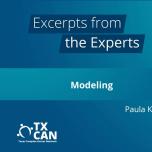
Assistive Technology, Blind/Visually Impaired, Deaf/Hard of Hearing, Dyslexia and Other Related Disorders, Inclusion, Instruction

Assistive Technology, Blind/Visually Impaired, Deaf/Hard of Hearing, Dyslexia and Other Related Disorders, Inclusion, Instruction

Significant Cognitive Disabilities, Instruction

Significant Cognitive Disabilities, Instruction

Autism, Behavior, Instruction, Significant Cognitive Disabilities

Significant Cognitive Disabilities, Instruction

Significant Cognitive Disabilities, Inclusion, Instruction

Inclusion, Instruction

Significant Cognitive Disabilities, Instruction

Autism, Behavior, Instruction, Significant Cognitive Disabilities

Autism, Behavior, Instruction